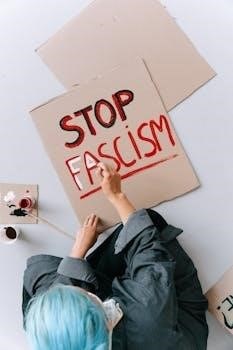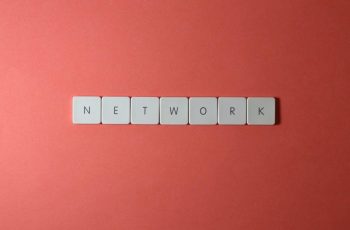What is Opposite Action in DBT?
Opposite Action‚ a core skill in Dialectical Behavior Therapy (DBT)‚ helps manage intense emotions by intentionally acting against emotionally driven urges. It aims to reduce the intensity of distressing emotions and foster more adaptive behaviors.
Definition and Purpose of Opposite Action
Opposite Action‚ a key component of DBT’s emotion regulation module‚ is a behavioral technique designed to counteract the automatic action urges that accompany intense emotions. The core idea is that by behaving in a manner that is directly opposite to what one feels inclined to do‚ it is possible to alter the emotional experience itself. This skill is not about suppressing or ignoring emotions but rather about actively choosing a different behavioral response that can help shift the emotional state. The purpose is to reduce the intensity and duration of negative emotions‚ especially those that lead to unhelpful or harmful behaviors‚ thus fostering healthier emotional regulation and promoting overall well-being. It provides a way to break free from the cycle of emotion-driven reactions.
Core Principle of Acting Against Emotional Urges
The fundamental principle of Opposite Action lies in recognizing that emotions often trigger specific action urges‚ which‚ if acted upon‚ can intensify and prolong the negative emotional experience. The core concept involves consciously choosing to behave in a manner that is directly contrary to these urges. For instance‚ if sadness prompts the urge to withdraw and isolate‚ Opposite Action would involve actively seeking social interaction. This principle acknowledges that our actions can influence our emotions; by engaging in behaviors opposite to those dictated by the emotion‚ we can disrupt the cycle of reinforcement between feelings and actions. The ultimate goal is to foster more adaptive responses to our emotions and promote emotional balance.

How Opposite Action Works
Opposite Action involves a three-step process⁚ identifying the emotion‚ choosing a behavior opposite to the urge‚ and consistently implementing that behavior. This technique aims to shift emotional states by altering actions.
Identifying the Emotion and Its Associated Action Urge
The initial step in using Opposite Action involves recognizing and naming the specific emotion you are experiencing. It’s crucial to pinpoint the precise feeling‚ whether it’s sadness‚ anger‚ fear‚ or guilt. Once you’ve identified the emotion‚ the next step is to become aware of the action urge that accompanies it. Each emotion tends to trigger a particular behavioral impulse‚ a biological response that gets us ready to act. For example‚ sadness might lead to the urge to withdraw‚ while anger could trigger the urge to lash out. Recognizing this urge is key to choosing an opposite action. This process allows you to consciously select a different path‚ rather than being driven by the emotion itself.
Choosing a Behavior Opposite to the Urge
After identifying the emotion and its associated action urge‚ the next critical step is to deliberately select a behavior that is the direct opposite of that urge. This isn’t about suppressing the emotion; instead‚ it’s about consciously choosing a different action. For instance‚ if the urge is to isolate oneself due to sadness‚ the opposite action might be to actively engage in social interaction. Similarly‚ if the urge is to avoid a task due to fear‚ the opposite action could involve taking small steps towards completing that task. This chosen behavior should directly counter the automatic response triggered by the emotion. It’s a conscious decision to act differently‚ which can lead to a shift in emotional intensity.
Implementing the Opposite Action Consistently
Once a behavior opposite to the emotional urge has been identified‚ it’s crucial to implement it consistently. This involves a conscious and repeated effort to act against the urge‚ even when it feels difficult. The key is not to give in to the initial impulse but to continue performing the chosen opposite action until there is a noticeable shift in emotional intensity. This might require repeated actions and a commitment to practicing the skill. Consistency is vital‚ as it helps break the cycle of acting on unhelpful emotional urges and allows for the development of new‚ more adaptive behavioral patterns. The more one practices‚ the easier it becomes to automatically engage in opposite action when needed.

When to Use Opposite Action
Employ Opposite Action when emotions don’t fit the facts or when acting on them proves ineffective. It’s for situations where emotions cause more harm than good.
Emotions That Do Not Fit the Facts
Sometimes‚ our emotional responses are not proportionate to the situation at hand. These are the instances when the emotion doesn’t align with the reality of what’s happening; perhaps you feel intense shame or guilt that is either unjustified or ineffective. In such cases‚ the emotion itself is causing more pain and distress than it is helping. Recognizing this discrepancy between your feelings and the actual circumstances is crucial. It signals a prime opportunity for utilizing Opposite Action‚ as it allows you to challenge and modify these unhelpful emotional responses. This discrepancy indicates that the emotion may not be serving you well‚ and therefore is the key to using this skill.
When Acting on Emotions is Ineffective
There are times when acting on our emotions only intensifies the negative feeling. If your actions driven by an emotion lead to further distress‚ damage relationships‚ or hinder your progress toward goals‚ then the emotion is ineffective. For example‚ withdrawing socially when feeling sad might make you feel more isolated. It is in these instances that Opposite Action becomes a valuable tool. Recognizing that your usual emotional response is not helping you cope‚ but rather making things worse‚ is the first step. This insight allows you to consciously choose a different‚ more effective path that is opposite to your urges.

DBT Emotion Regulation Strategies
Dialectical Behavior Therapy (DBT) employs various emotion regulation strategies‚ including Opposite Action‚ mindfulness‚ and problem-solving. These techniques aim to improve emotional management and overall well-being.
Opposite Action as a Key Strategy
Opposite Action stands as a central strategy within DBT’s emotion regulation framework‚ designed to directly challenge the influence of unhelpful emotions. This technique involves intentionally behaving in a manner that contradicts the action urge associated with a particular emotion‚ aiming to lessen its intensity and duration. By consciously choosing actions that are opposite to our initial impulses‚ we can disrupt the cycle of emotional reactivity‚ fostering more adaptive responses and promoting a sense of control over our emotional experiences‚ thus enhancing overall emotional well-being and resilience in the face of distress. This skill is crucial for managing intense emotions.
Other DBT Emotion Regulation Skills
Beyond Opposite Action‚ DBT offers a range of other crucial emotion regulation skills. These include understanding and naming emotions to increase awareness‚ reducing vulnerability to emotion mind by addressing lifestyle factors‚ and increasing mindfulness to current emotions by being present in the moment without judgment. Problem-solving is another key skill‚ focusing on changing or avoiding problematic situations. These skills aim to improve emotional awareness‚ personal well-being and the ability to cope with distress effectively. The combination of these strategies provides a comprehensive approach to managing emotions and building resilience‚ supporting individuals in leading more balanced and fulfilling lives.

Practical Applications of Opposite Action
Opposite Action can be applied in daily life by identifying unhelpful emotional responses and choosing behaviors that contradict them‚ leading to more adaptive emotional regulation.
Examples of Common Emotional Urges and Opposite Actions
Consider these examples⁚ when feeling lethargic and wanting to stay in bed‚ the opposite action is to get up and engage in your day. If experiencing social withdrawal‚ the opposite is to initiate interaction with others. With fear of failure‚ try taking a small step towards your goal. When feeling fear of rejection‚ do something that involves connection. If plagued by guilt‚ consider engaging in self-compassion or making amends. These illustrate how acting against an emotional urge can change the intensity of the emotion and promote adaptive behaviors. These are just a few instances of how this DBT skill can be implemented effectively.
Using Opposite Action in Daily Life
Integrating Opposite Action into your daily routine involves recognizing when your emotions are leading to unhelpful behaviors. Start by identifying the specific emotion and its associated urge‚ then consciously choose an action that is the opposite. For example‚ if anxiety makes you avoid social situations‚ try initiating a conversation. If anger makes you want to isolate‚ seek connection and support. Consistency is key; regularly practice this skill even when emotions are not intense to strengthen your ability to use it effectively when needed. Over time‚ this can become a natural response to emotional urges‚ improving emotional regulation in everyday life. Remember‚ this skill is about choosing a different path.
Benefits of Opposite Action
Opposite Action reduces the intensity of distressing emotions and improves overall emotional regulation. It helps foster adaptive responses‚ promoting well-being by breaking unhelpful emotional cycles.
Reducing the Intensity of Distressing Emotions
Opposite action is a powerful DBT skill designed to lessen the intensity and duration of distressing emotions. By consciously choosing behaviors that contradict unhelpful emotional responses‚ individuals can actively disrupt the cycle of negative feelings. This technique works by interrupting the automatic link between an emotion and its associated action urge. For example‚ if feeling sad leads to the urge to isolate‚ engaging in social activities can help to reduce the sadness. This deliberate shift in behavior can lead to a significant decrease in the strength and longevity of the negative emotion‚ offering a more manageable experience. The goal is to replace maladaptive reactions with more adaptive and healthy coping mechanisms.
Improving Emotional Regulation and Well-being
By consistently practicing opposite action‚ individuals develop enhanced emotional regulation skills. This DBT technique empowers them to choose their responses to emotions rather than being controlled by them. Over time‚ this conscious effort leads to a greater sense of control over one’s emotional experiences. As individuals become more adept at acting opposite to their urges‚ they break free from unhelpful patterns. This promotes a significant improvement in overall well-being. With an increased ability to manage intense emotions‚ individuals experience less distress and can engage in more fulfilling activities. Opposite action facilitates a more balanced and healthier emotional state‚ contributing to a more positive and satisfying life experience.
Fostering Adaptive Responses
Opposite action promotes adaptive responses by encouraging individuals to break free from automatic‚ often unhelpful‚ reactions to emotions. Instead of succumbing to urges that might lead to negative outcomes‚ this DBT skill cultivates a more thoughtful and intentional approach. By choosing behaviors that contradict emotional impulses‚ people learn to respond in ways that are more aligned with their goals and values. This shift from reactive to proactive behavior enables individuals to build healthier relationships and achieve personal growth. Acting opposite to emotional urges allows for the development of new‚ more constructive habits. This leads to greater resilience and the ability to cope with life’s challenges more effectively.


